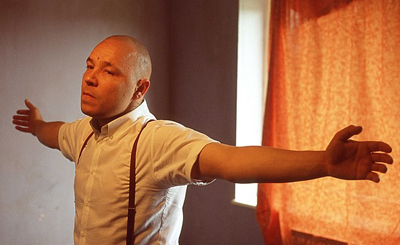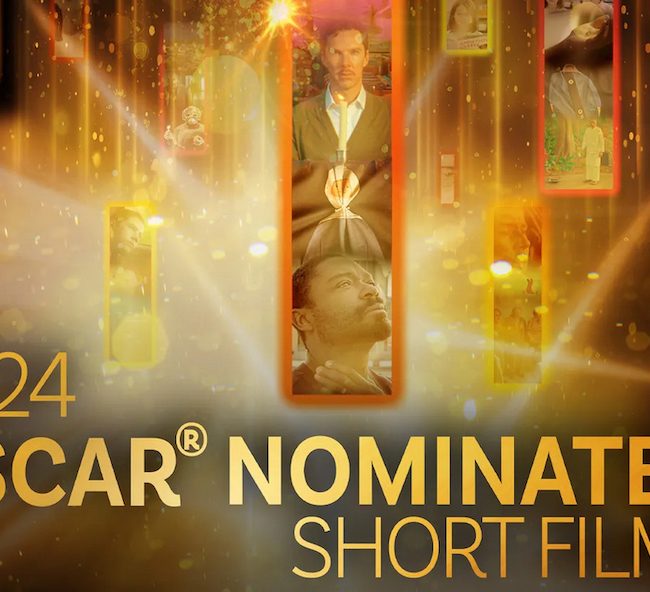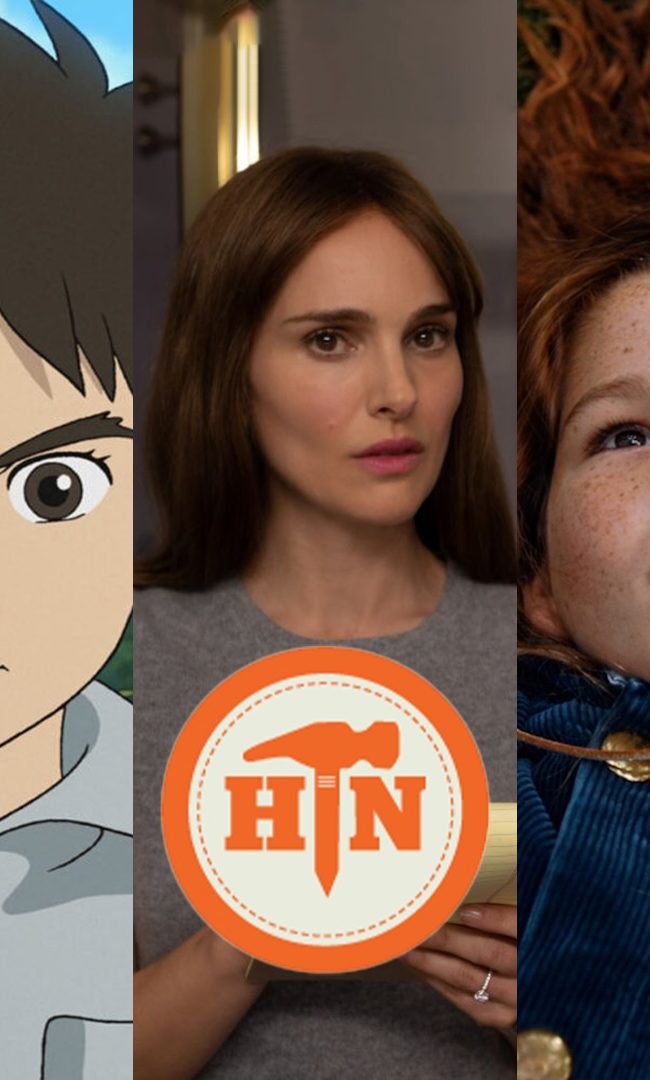The bully in movies has been around for nearly as long as the medium itself. At the end of Chaplin’s City Lights, the Tramp is broke, alone, on the street. At his lowest point, he feels the sticky pang of a wet spitball on the back of his neck, and turns to see a sneaky looking newspaper boy with an overbite cast his eyes down and then toward the sky. The Tramp knows he did it—who else could it be?—but is left without recourse; he will sooner endure the punishment he does not deserve than stoop to the boy’s level. Chaplin, then Groucho, and countless after them, go up against foes that are most often bigger, stronger, meaner, and it is only through their patience and ingenuity that they are able to come out on top, scathed only on the surface.
The underdog storyline dates back to the Bible and no doubt well before that. It makes sense; it feels unnatural to root for Goliath against David, it undermines the way we understand conflict. In the stories we’re told as kids, the movies we see, the narratives we grow up in and around, the bully is that foe that the Tramp faces, Scut Farkus in A Christmas Story, Biff in Back to the Future. The archetype is physically imposing, intimidating, small-minded, one-dimensional. But those movies are either ancient or throwback period pieces. Perhaps bullies have more recently been portrayed as multi-faceted, complex, nuanced characters in pop culture?
No, they haven’t. Another period piece, the beyond-revered Freaks and Geeks employs the same tired clichés, the expected telltale signs of bullying: name calling, public humiliation, physical assault. The show is tinged in nostalgia and so knowingly winks with/at its audience; it at once announces its datedness while living in it and so includes itself in on the joke. Other instances like Mean Girls and Let The Right One In similarly revert back to tried, tested and true methods rather than delving deeper into their stories, to give their audiences the why that’s hidden behind the how. These are all relevant examples because they’re all really good, done by pros that are working at the top of their game.
The newest rendition of bullying comes in the form of The Dirties, a docu-fiction about a school shooting, made in Canada. School shootings can be the catastrophic outcome of vicious bullying; it’s been noted that some shooters have targeted those who had bullied them in the past, explaining this in their suicide notes/videos. Writer/director/star Matt Johnson’s framing device—the lead is making a pastiche comedic revenge movie about school shootings and over time blurs the line between Matt the character’s film/school project and his actual reality—is an ingenious conceit. Despite it being pure fiction—albeit with a bogus disclaimer at the outset alleging that the footage is unaltered out of respect to the “victims”—the format and aesthetic approach makes the film feel real. So why not have real bullies?
The most distinguishing characteristic of the Dirties is that one of them wears a green headband. Beyond that, they’re all male, mostly White, presumably popular. And they’re not even that mean. (A recent example of truly unbearable bullying is the Belgian-Dutch 2007 film Ben X.) At least nowhere near enough to begin to justify Matt’s actions. (Is that the point?) The film and its makers by no mean condone his actions either, though the tone is an ambiguous one; we’re left adrift with Matt at the end, an unsettling feeling in a context where more firm footing is perhaps needed, or at least appropriate. The outcome is the most extreme possible, and so we can’t help but look back at what caused it: their clothes are put in the showers, things are thrown at them in class, Matt’s best friend Owen is publicly shamed in the cafeteria. Yet, paradoxically, Matt and Owen’s rift later in the film is in part caused by Owen’s crush on Chrissy H., one of the most popular girls in school, coming to fruition. Nabbing the beautiful prom queen seems a far cry from endless persecution.
Still, The Dirties shows what happens when a marginalized person begins to confuse fiction and reality. The film is more akin to Taxi Driver than Elephant, and Matt to Travis Bickle, a warped mind rebelling against an unfair world, than it is a true portrayal of bullying and its repercussions. Though its title might tell you differently, the movie is about Matt, not the Dirties.
Too often, the subject of bullying is treated with sentimental kid gloves. Even the documentary Bully, a movie the Weinsteins pushed to be taught in schools across America, rarely addresses bullying as a process, a continuum; it instead focused on its aftermath, playing for tears, tugging on heartstrings. It’s the difference between sympathy and empathy. It’s easy to sympathize with a kid who is persecuted; it’s as natural as rooting for David over Goliath. It is more difficult to empathize and look past the problem to the root. It’s actual work.
Some films do look past the pain, showing bullying as an inherently flawed, confused game of role-playing, an incomplete social construct. More so, they show how quickly the relationships change, how fickle they are.
Todd Solondz captures the broken, corrupt social hierarchies that make up our public and private lives. The 1995 film Welcome To The Dollhouse at once portrays stereotypes and clichés, and then shatters them, thereby reinventing them. It’s impossible for anyone to like Dawn Wiener; you can’t even like not liking her because she’s so drab, a total non-entity. In the first few minutes of the film she is persecuted by the cheerleaders, an outcast Goth, even a fellow bullied victim refuses to associate with her, squealing “Get away from me, wiener dog,” as he runs away from her, down the hall. The Goth, Lolita, herself an outsider, corners Dawn in the bathroom and demands she “take a shit.” When Dawn tries to make nice, offering Lolita the role of Vice President in Dawn’s super secret club, Lolita shoves Dawn into a stall, demanding the door be left open so she can have proof. “Why do you hate me?” Dawn asks. “Because you’re ugly,” is Lolita’s matter-of-fact response, one that did not need to be uttered aloud.
All of this horrific treatment pales in comparison to Brandon’s brand of bullying. Brandon is the token bully, yet over the course of the story his character deepens, widens, reveals itself. He threatens Dawn, in all too plain English, that he is going to rape her. However, when he finds himself alone with her, he confides in her, makes himself vulnerable. After a hilariously one-sided kiss, Dawn asks, “Brandon, are you still going to rape me?” to which Brandon responds, “What time is it?” Dawn answers, “I dunno but I guess I don’t have to be home yet,” and finally Brandon acquiesces, “Nah, there’s not enough time.” “Thanks, Brandon,” her muted response. The gender politics/power dynamic here is totally skewed, challenged, created anew. What was at first a predator/victim scenario somehow morphs into a confused romance, with both parties unsure of how they feel—neither is accustomed to getting positive attention. Dawn takes on a maternal role toward Brandon, and he’s all too eager to be a little less lonely.
Later, after Brandon too is shamed in front of the cheerleaders, he and Dawn are alone in her childhood clubhouse. They look up at the stars, terrible music plays. When Dawn stops the cassette she mentions her friend Ralphie. “Why do you hang out with that faggot?” Brandon asks. “Just because he’s a faggot doesn’t mean he’s an asshole,” is Dawn’s response. “Yeah maybe,” Brandon says and then leans in for another one-sided kiss. The choice of language undercuts the truth and complexity of their statements. Solondz is boiling down all of our inane social conventions, our obsession with status, to a conversation had by two inarticulate middle schoolers in a clubhouse. Finally, when Dawn confesses to loving another man, high schooler Steve Rogers, Brandon is incensed—he’s rejected again. Storming off, he pushes her to the ground: “Asshole.” The lowest of the low. As if out of nowhere, Ralphie emerges from the bushes and consoles Dawn, her only friend in the world. “Faggot!” she screams and runs inside.
This scene, and the film as a whole, gets at bullying from a different angle. Part of this is because of Solondz’s deadpan, mordant tone. But part of it is also simply because Solondz cares about Brandon, he cares about why he does the horrible things he does, he wants to discover what makes Brandon hate. He knows him.
Shane Meadows’s This Is England similarly portrays bullying in a complex, subtle light. At first, 12-year-old Shaun is picked on for his clothes, his size, typical stuff. But soon, he makes new friends; cool ones. They accept Shaun and everything is going great. Then Combo, fresh out of prison, enters the story. Combo is charismatic, generous and loyal; he loves his country and wants to share that with his friends. Yet those who know him seem wary and before too long the group disbands. Shaun follows Combo.
Combo’s patriotism quickly devolves into xenophobic Neo-Nazism and Shaun is confused because he is mourning his father, who died for his country in the Falklands, and so believes that by following Combo he’s somehow upholding his father’s legacy. But, really, Combo just wants to be loved too. Later, he follows and finally confronts a past girlfriend, Lol. He says that he wants to rekindle their romance, presenting her with a pathetically primitive wood box made in prison. She informs him that they spent one night together, years ago, that she was very young and very drunk at the time. The short scene speaks volumes; it’s the one instance where Combo opens himself up, tries to connect with another person, not just control and dominate them. And he’s rejected—she doesn’t want him.
 From there, he further descends into a hate-ridden, racist haze. He verbally abuses and finally physically assaults their friend of Jamaican descent, Milky. But as the hate speech leaves his mouth, you can see that he’s already sorry, that he knows it’s wrong; he doesn’t want to do it but feels it’s his fate. Constant rejection—from women, from friends, from employers, from his country—has left Combo with nothing but hate in his heart. The world doesn’t want him, so he doesn’t want it back. Shaun figures out too late that Combo’s charisma is fueled by bitterness, loneliness, loss. But it’s crucial we see all sides of Combo, because it allows us to know why Shaun goes with him, and then why he leaves. Directors Meadows and Solondz show us fully realized, broken people, how the Brandons and Combos of the world are born.
From there, he further descends into a hate-ridden, racist haze. He verbally abuses and finally physically assaults their friend of Jamaican descent, Milky. But as the hate speech leaves his mouth, you can see that he’s already sorry, that he knows it’s wrong; he doesn’t want to do it but feels it’s his fate. Constant rejection—from women, from friends, from employers, from his country—has left Combo with nothing but hate in his heart. The world doesn’t want him, so he doesn’t want it back. Shaun figures out too late that Combo’s charisma is fueled by bitterness, loneliness, loss. But it’s crucial we see all sides of Combo, because it allows us to know why Shaun goes with him, and then why he leaves. Directors Meadows and Solondz show us fully realized, broken people, how the Brandons and Combos of the world are born.
There are other films that show the how and the why bullying originates, festers, blooms. And it’s essential, because if we continue to depict the villain as the big brute, the way he’s been largely portrayed for the past hundred years, then we’re doomed to fall into the same traps, to think the bully is an “other,” when, really, they’re just like everyone else. Like us. At the end of Wes Anderson’s Rushmore, Max tosses the school bully Magnus Buchan a copy of his new play, offering him a role written specifically for him. “I always wanted to be in one of your fucking plays,” he says. Max responds, “I know you did, mate.”
— Jesse Klein












Pingback: THE 2013 HAMMER TO NAIL AWARDS – Hammer to Nail